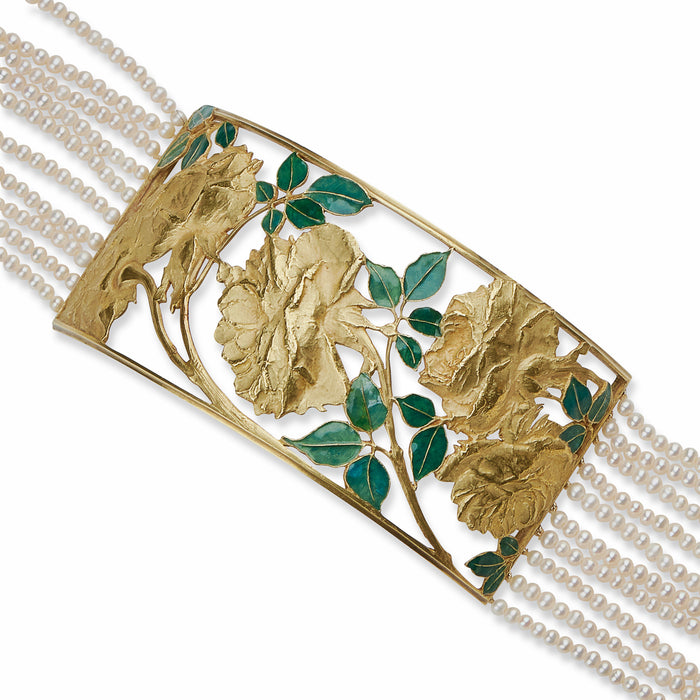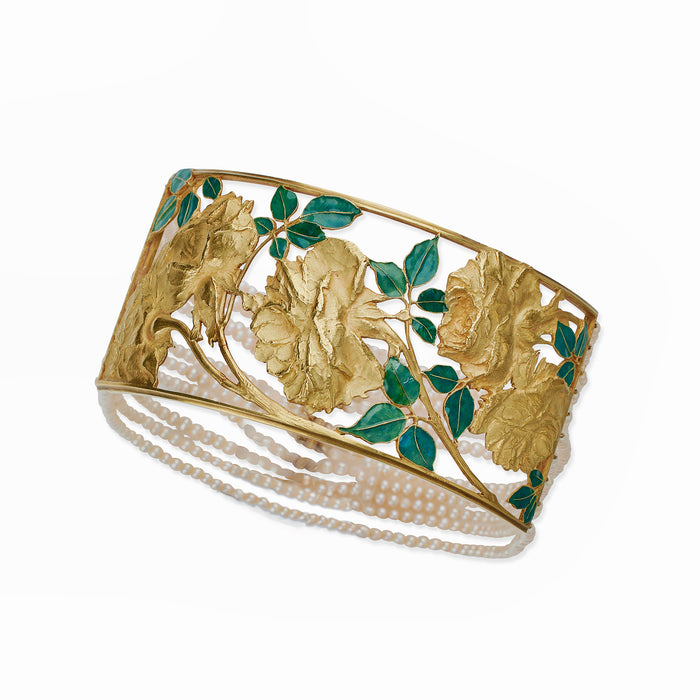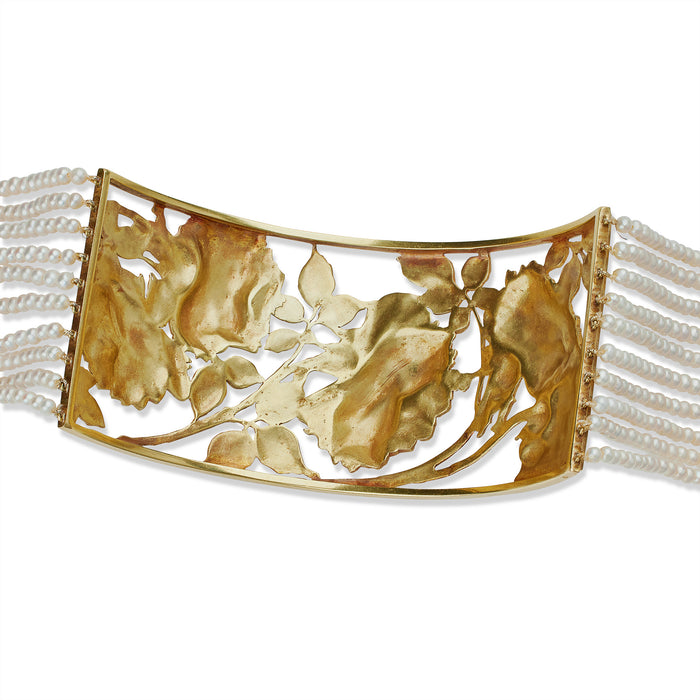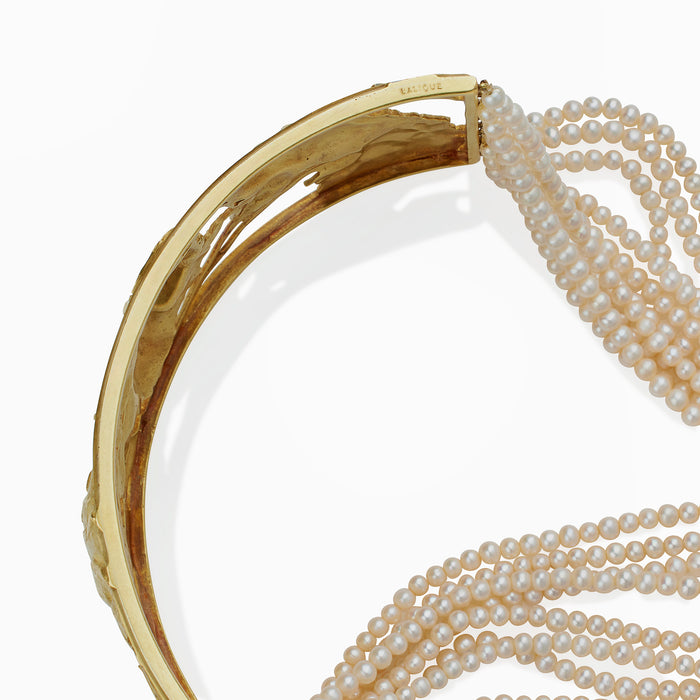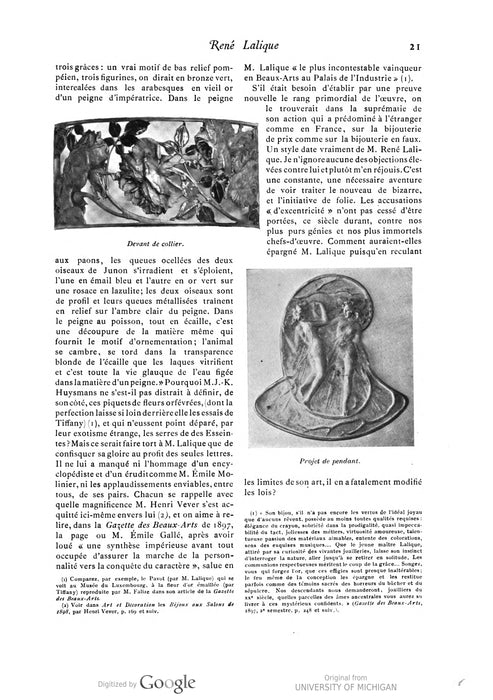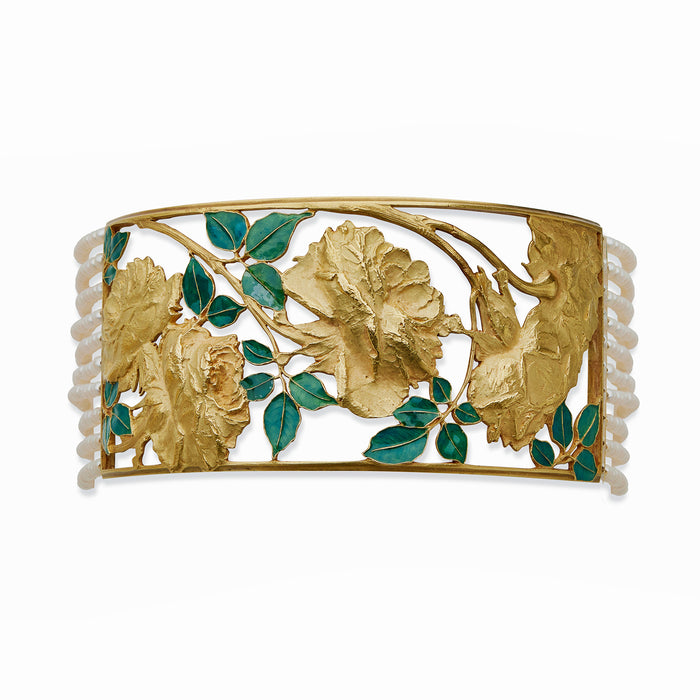
René Lalique Art Nouveau 18K Gold, Enamel and Seed Pearl "Collier de chien" Necklace
- Product Details
- Curator's Notes
Item #: N-21368
Artist: René Lalique
Country: France
Circa: 1898
Dimensions: 13.50" length.
Materials: Seed pearls; Enamel; 18K Gold
Signed: LALIQUE
Exhibition History: This jewel appears in contemporary literature as having been exhibited at one of Paris Salons, as published in 1899.
Literature: A "collar ornament" of this design features in "René Lalique 1890-1910, Schmuck und Objets-d'Art", the catalogue raisonné by Sigrid Barten, p. 225. It was illustrated in Art et Décoration, in the article "Les Maitres Décorateurs Français René Lalique", July 1899, by Roger Marx, p. 21. It also appears in The Paris Salons, 1895-1914- Jewellery II, The Designers L-Z, by Alistair Duncan, p. 33.

